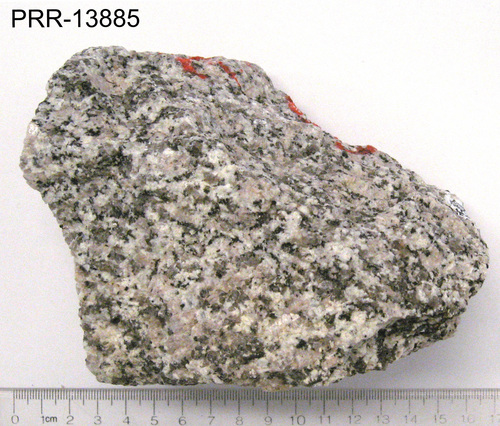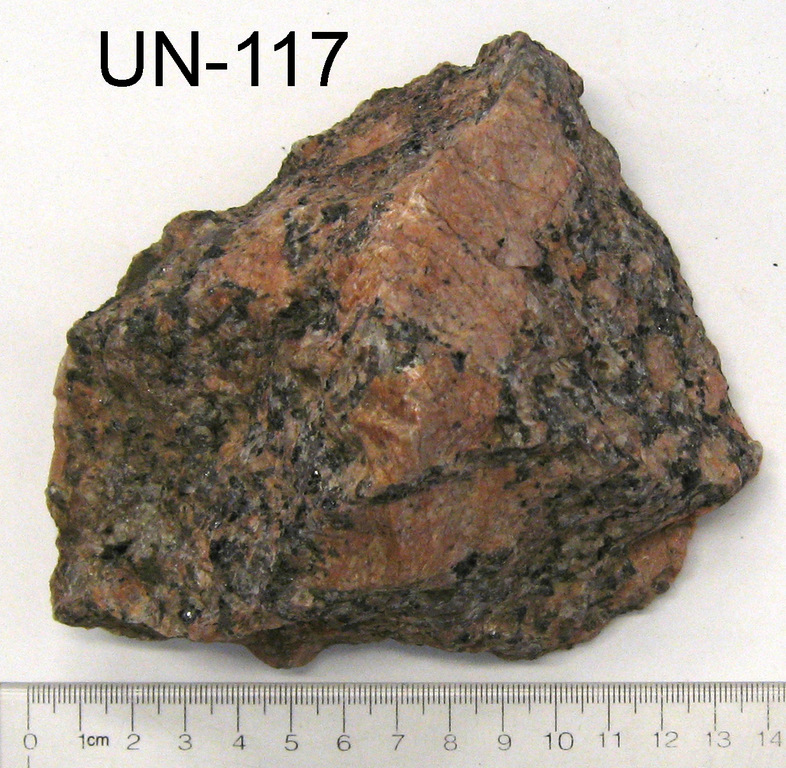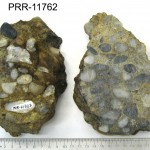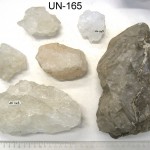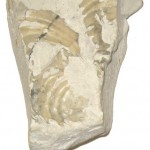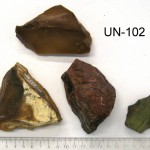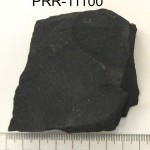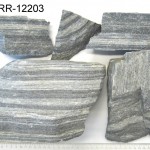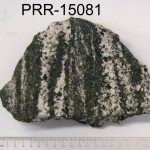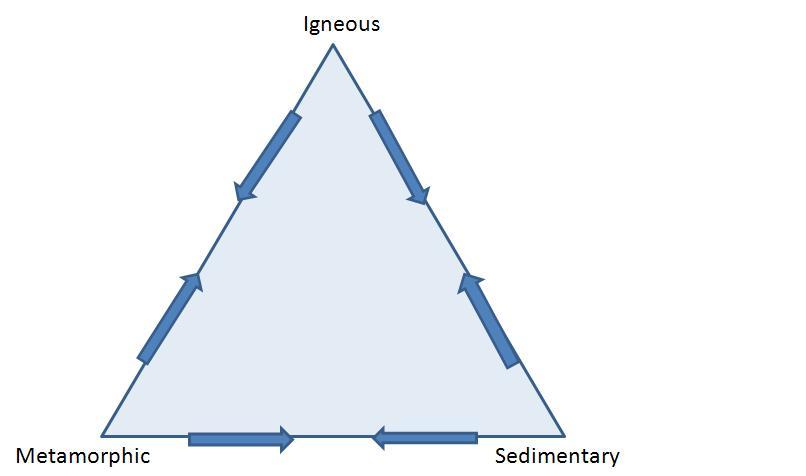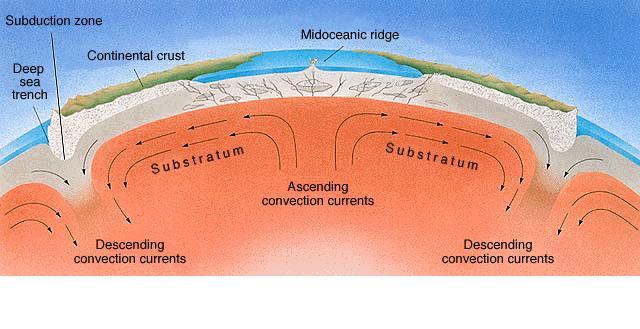Rocks and minerals make up the earth around us. But what exactly are rocks and minerals? What is the difference between them? How do they form? Where are they found?
This article provides content knowledge about minerals, the three types of rocks, the rock cycle, and polar geology as well as online resources for further learning and connections to the National Science Education Standards.
MINERALS
Minerals, quite simply, are the building blocks for making rocks, and a rock is made up of one or more minerals. When you look at a rock and see different colors, those colors are minerals that make up that specific rock. There are over 3,000 named minerals; however, there are really only about 30 minerals that people who are not geologists will come across or need to concern themselves with.
There are four criteria that must be met in order for something to be called a mineral:
- Not formed from the remains of plants or animals; that is, inorganic
- Naturally occurring, not man-made
- Has the same chemical makeup wherever it is found (Ex: Quartz is always SiO2)
- Has a crystalline structure, which means that it has a specific repeating pattern of atoms.
If all four of the criteria are not met, the substance is not a mineral. Therefore, “minerals” made in a lab are not true minerals because they did not occur naturally.
Here are a few tests that geologists rely on to identify what minerals they are looking at.
Color – Color is a very common way to try to identify a mineral; however, it should not be used on its own. Because any mineral can be any color, you cannot use color alone to identify a mineral. Color can merely help you. (Or, sometimes, confuse you!)
Shape – Minerals form in certain shapes based on the elements that make them up. Some minerals, such as quartz, only form in one particular shape. Others, such as calcite, can be found in multiple shapes. Sometimes shape isn’t enough and you need to use other tests to help you identify a mineral.
Hardness – How hard or soft a mineral is can tell you right away what mineral it could or could not be. The hardness of minerals is based on the Mohs Hardness Scale, which ranges from 1-10, 1 being the softest and 10 the hardest.
Streak – The streak of a mineral is simply the color of a powder that’s left behind when the mineral is scratched along a white, ceramic, unglazed tile. Even if the color of the mineral itself changes from one specimen to another, the streak color is always the same.
Luster – Luster simply means the way that light reflects off a mineral. Light can make a mineral look very dull or as shiny as a diamond.
There are many other tests that geologists use; however, the tests listed above are usually sufficient for the amateur, and can help you identify the mineral.
THE THREE TYPES OF ROCKS
All of the rocks on earth are formed in one of three ways.
Igneous rocks form when magma or lava cools and hardens into a rock. Magma and lava are rocks that are so hot they move like a liquid. Magma is molten rock that is underground; lava is molten rock that is above the ground – and that is the only difference between them. A common igneous rock is granite. It is often used for countertops in homes because of its aesthetic appeal and its durability.
Sedimentary rocks can form in one of three main ways.
| Clastic sedimentary rocks: These sedimentary rocks form from the breakdown material of other rocks. When a rock is exposed to the elements, it will begin to erode. The small pieces that break off during erosion will collect in oceans and lakes. Over enough time and with enough pressure, these pieces will be compressed and cemented together to form a larger rock. This larger rock is a clastic sedimentary rock. A perfect example of this kind of sedimentary rock is a conglomerate. It is easy to see that this rock formed from the breakdown materials of other rocks. | ||||
| Chemical sedimentary rocks: These sedimentary rocks are formed when mineral-rich water evaporates and leaves material behind. An example is halite. Halite is formed when sea water evaporates and leaves behind the salt, which then hardens. | ||||
| Organic sedimentary rocks: These sedimentary rocks are formed from fossils. They are formed from the hard parts of dead organisms, such as bones and shells, which are cemented together and form into a rock. Some organisms’ hard parts are made of calcium and form a sedimentary rock called a limestone. Some organisms’ hard parts are made of silica and they will form a sedimentary rock called chert. Coal is another organic sedimentary rock. It forms when plants die and are buried deep in the earth, where they are put under great pressure. Over enough time the pressure will change the plant remains into coal. |
|
|||
| Click on each image to see a larger versions. All photos courtesy of the U.S. Polar Rock Repository. |
Metamorphic rocks are formed when a rock is buried deep in the earth and is subjected to extreme pressure and heat. The pressure and heat causes the minerals in the rock to change into different minerals. This ends up changing the rock into a completely different rock. We call rocks that have been changed from one rock to another by pressure and heat metamorphic rocks.
A good example of a metamorphic rock is gneiss (pronounced like “nice”). Gneiss is granite that has been put under extreme pressure and heat, which caused the rock to change into something different, a gneiss. Sometimes granite and gneiss can look very similar. One distinguishing characteristic of gneiss is its banding. Due to the pressure and heat that the granite is subjected to, similar minerals in the rock begin to align with each other, producing the bands in gneiss. This feature is known as gneissic banding.
Click on each image to see a larger version. Photos courtesy of the U.S. Polar Rock Repository.
THE ROCK CYCLE
The rock cycle helps to explain how rocks are formed from other rocks. The cycle is shown in the picture below from the U.S. Geological Survey (USGS). You will typically see a picture similar to this one when looking for diagrams of the rock cycle.
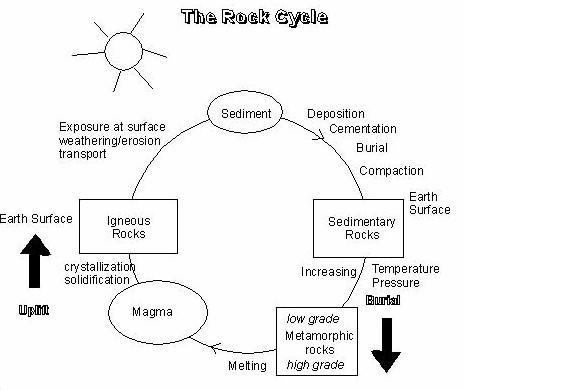 It can be pretty difficult to follow rock formation in a circular pattern, so you may want to think of the pattern as more of a rock triangle than a rock cycle.
It can be pretty difficult to follow rock formation in a circular pattern, so you may want to think of the pattern as more of a rock triangle than a rock cycle.
Looking at the rock cycle in this way helps you to realize that the cycle doesn’t necessarily move around in a nice circle. If you are looking at the USGS rock cycle diagram, it appears as though the cycle goes: igneous forms sedimentary rocks, which form metamorphic rocks, which form back into igneous rocks. However, this is misleading. The triangle diagram shows how one type of rock can form any other type of rock. For example, starting at the top of the triangle, you can see that “Igneous” goes to both “Sedimentary” and “Metamorphic.” This tells you that an igneous rock can make either a sedimentary or a metamorphic rock, depending on the forces that act upon it.
One thing that helps the rock cycle along is the movement of the earth’s plates. The earth’s crust is broken up into several plates that float and slowly move around on top of the mantle. These plates move due to convection currents in the earth’s mantle. Places where hot magma rises up from the center of the earth cause the plates to spread apart from each other. These areas are known as divergent plate boundaries or rifts. One of the best examples of this type of plate boundary is the Mid-Atlantic Ridge in the middle of the Atlantic Ocean. This ridge is slowly causing North and South America to move farther and farther away from Europe and Africa.
Places where the magma is cooling and begins to descend toward the earth’s core bring continental crust down with them. These areas are known as convergent margins or subduction zones. Because of the collision, these are areas in which deep trenches will form at the bottom of the ocean. The most famous trench is the Mariana Trench, located several hundred miles southeast of Japan, near Guam. This trench is the deepest part of the ocean, reaching almost seven miles below sea level. It is formed by the collision of two oceanic plates; the less dense Pacific Plate is subducted under the more dense Philippine Plate.
Rocks that are pulled down with the crust are put under extreme pressure and heat, which will cause them to turn into metamorphic rocks. If they are pulled down far enough, the heat and pressure may cause the rocks to melt into magma, which will then rise up toward the surface and cool as igneous rocks. Plate tectonics helps to recycle earth’s rocks and to create new ones.
Copyright Schlumberger, Ltd. Used with permission. This graphic originally appeared in “The Earth´s Heat,” Oilfield Review 1, no. 1 (April 1989): 54–61.
POLAR GEOLOGY
Many geologists travel down to the South Pole to do research in Antarctica. Despite being a very cold, very windy, and seemingly desolate place, Antarctica holds a lot of clues to the past.
Nearly 98 percent of Antarctica is covered in ice and snow, leaving only about 2 percent that is exposed rock. But these rocks can tell geologists a great deal about Antarctica’s past, which ultimately tells us about the earth’s past.
Antarctica contains one of the longest mountain ranges in the world. The Transantarctic Mountains span a distance of nearly 3,000 miles and cut the continent into West Antarctica and East Antarctica. These mountains rise high above the surrounding snow and ice and even contain dry valleys – areas that are ice free.
The Transantarctic Mountains are made mostly of a sedimentary rock that is known to Antarctic geologists as Beacon sandstone. This sandstone is between 200 to 400 million years old. There are areas where the sandstone has been intruded by a layer of igneous rock called dolerite. This is the result of volcanic activity, approximately 180 million years ago, that caused molten rock to be injected between layers of sandstone.
Antarctica used to be part of the supercontinent Pangaea. Pangaea is the name given to the enormous landmass that existed millions of years ago when all of the continents were together as one supercontinent. The climate of Antarctica was very different from how we know it today. Antarctica was warm, with lush vegetation and animals that thrived. This all changed when Pangaea began to break apart. It broke into two smaller supercontinents; Laurasia in the Northern Hemisphere and Gondwanaland, or Gondwana, in the Southern Hemisphere. Antarctica along with South America, Africa, India and Australia comprised Gondwana.
After a few million years, Gondwana and Laurasia began to break down into smaller continents, which eventually became the continents as we know them today. When Antarctica broke away from Gondwana, ocean circulation patterns changed. This change in circulation had a tremendous effect on the climate of Antarctica. It became cold, and the plants and creatures living there could no longer survive. Some left behind their fossils for us to find.
Each type of rock, whether igneous, sedimentary or metamorphic, can be found in Antarctica. The rocks found in Antarctica really aren’t any different from the rocks found elsewhere in the world. Antarctica rocks may have formed under different conditions, but they are essentially the same as rocks on other continents. The significance of these rocks, then, is their ability to tell of an Antarctica quite different from what we know today.
RESOURCES
Rocks for Kids: Identifying Minerals
Explains the difference between rocks and minerals and the properties of minerals. The site also includes a list of field guides and books on rocks and minerals.
Mineral Matters: How to Identify Minerals
Provides an overview of the physical properties used to identify minerals. This site is appropriate for upper-elementary students as well as teachers.
Rocks, Minerals, Technology, and Society
This resource guide from the Middle School Portal 2: Math and Science Pathways project provides background information for teachers.
Ask GeoMan: The 3 Basic Rock Types
An overview of igneous, sedimentary, and metamorphic rocks and their characteristics.
Rock Hounds: How Rocks Are Created
Animations and concise explanations of the formation of sedimentary, metamorphic, and igneous rock.
The Rock Cycle
A one-page overview of the rock cycle.
Interactive Rock Cycle Animation
This cutaway view of earth shows where some common rock-forming processes occur. Embedded animations illustrate the path of a rock moving through the rock cycle.
Antarctica Geology
An overview of the continent’s geologic features.
Antarctic Connection: Geology
A description of Antarctica’s geologic history and geologic features.
NATIONAL SCIENCE EDUCATION STANDARDS
A study of rocks and minerals aligns with the Earth and Space Science Content Standard for grades K-4 and 5-8.
K-4 Earth and Space Science
Properties of Earth Materials
- Earth materials are solid rocks and soils, water, and the gases of the atmosphere. The varied materials have different physical and chemical properties, which make them useful in different ways, for example, as building materials, as sources of fuel, or for growing the plants we use as food. Earth materials provide many of the resources that humans use.
5-8 Earth and Space Science
Structure of the Earth System
- Land forms are the result of a combination of constructive and destructive forces. Constructive forces include crustal deformation, volcanic eruption, and deposition of sediment, while destructive forces include weathering and erosion.
- Some changes in the solid earth can be described as the “rock cycle.” Old rocks at the earth’s surface weather, forming sediments that are buried, then compacted, heated, and often recrystallized into new rock. Eventually, those new rocks may be brought to the surface by the forces that drive plate motions, and the rock cycle continues.
Read the entire National Science Education Standards online for free or register to download the free PDF. The content standards are found in Chapter 6.
This article was written by Julie Codispoti For more information, see the Contributors page. Email Kimberly Lightle, Principal Investigator, with any questions about the content of this site.
Copyright September 2008 – The Ohio State University. This material is based upon work supported by the National Science Foundation under Grant No. 0733024. Any opinions, findings, and conclusions or recommendations expressed in this material are those of the author(s) and do not necessarily reflect the views of the National Science Foundation. This work is licensed under an Attribution-ShareAlike 3.0 Unported Creative Commons license.

